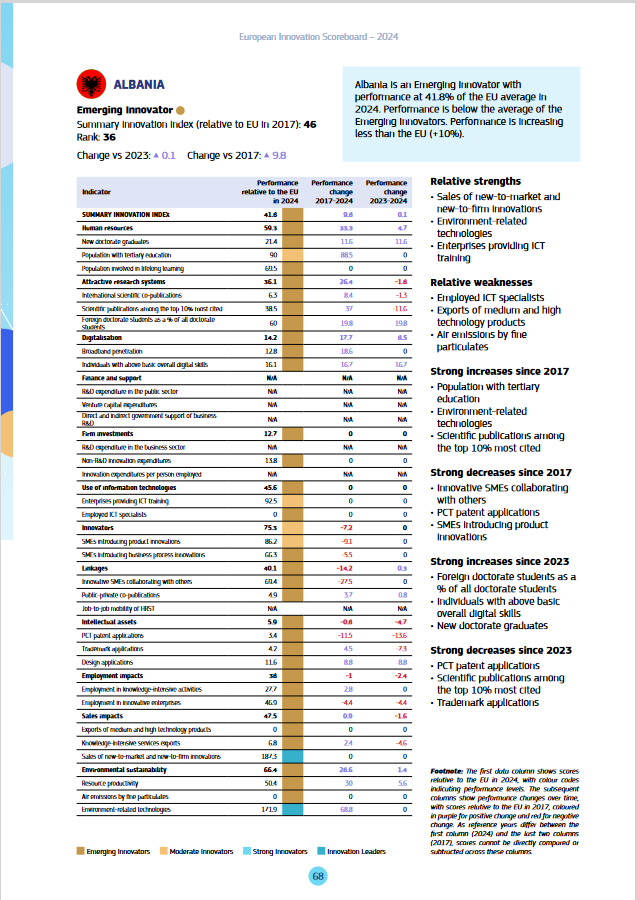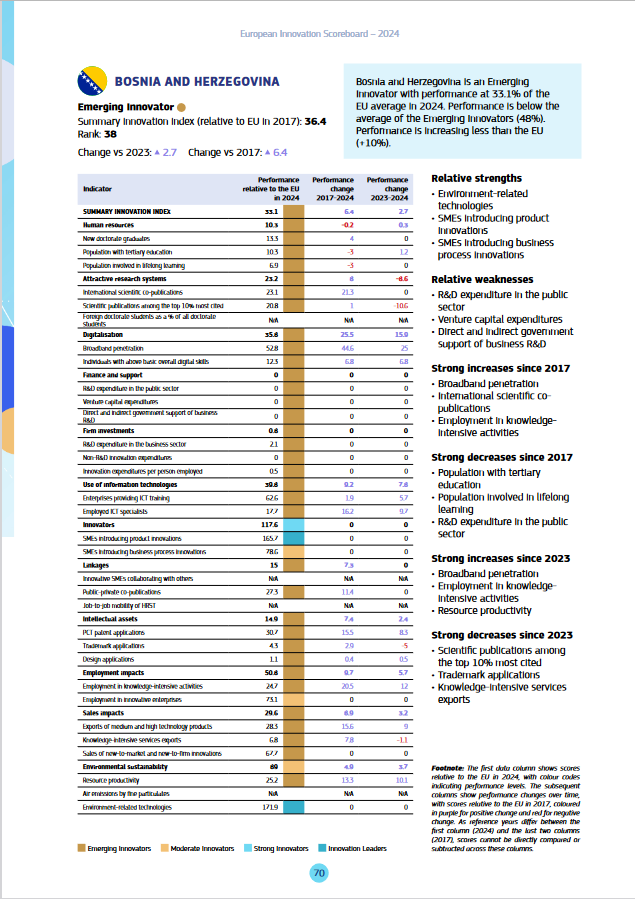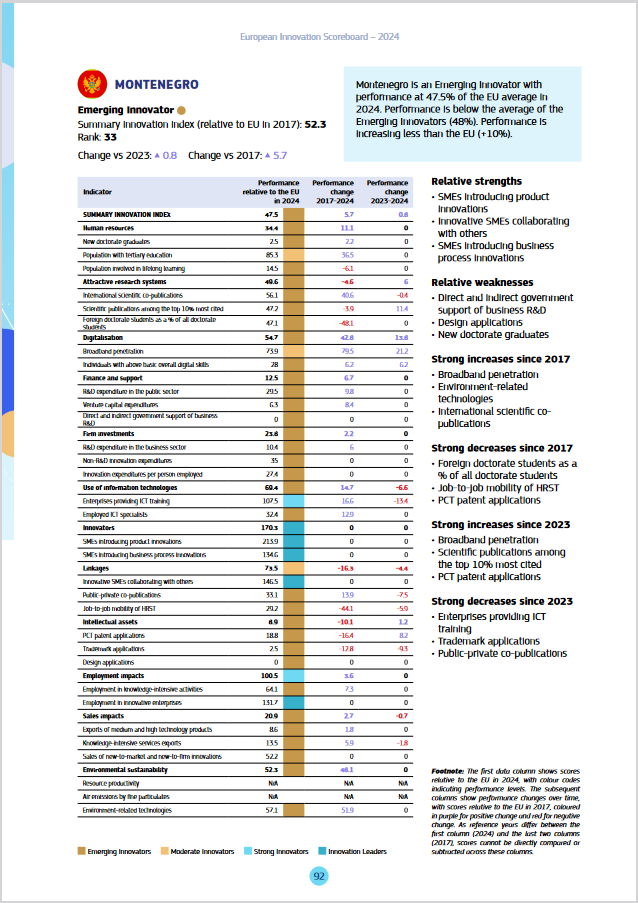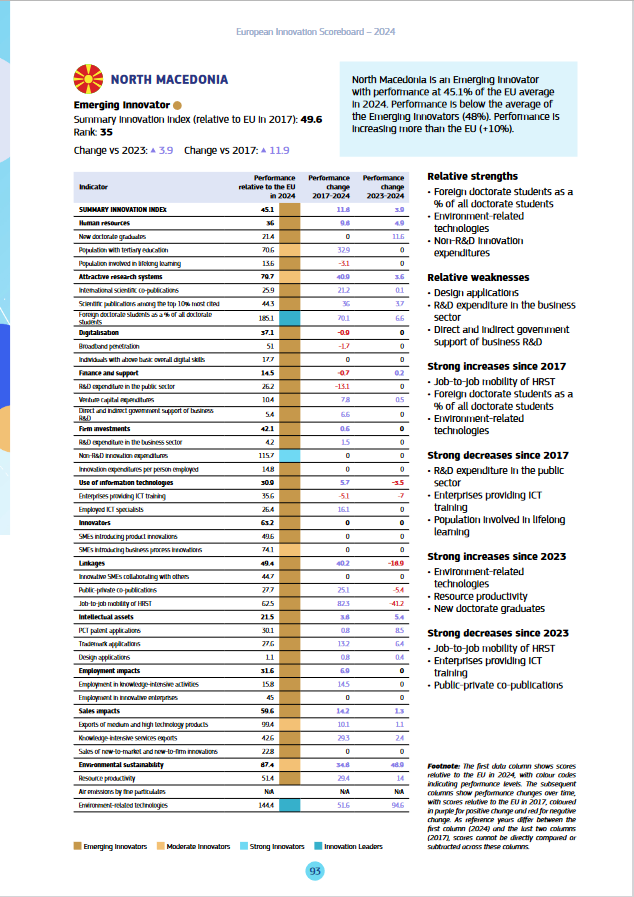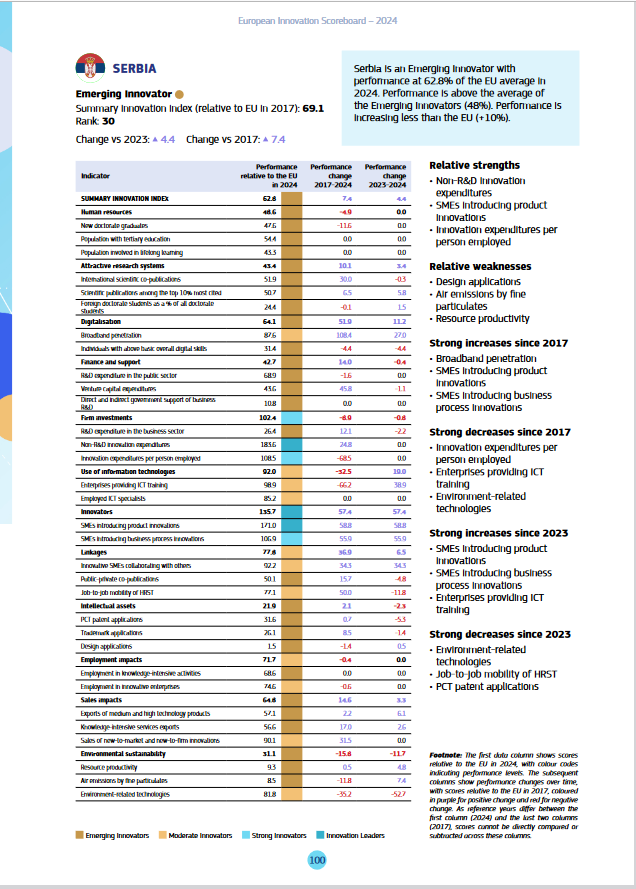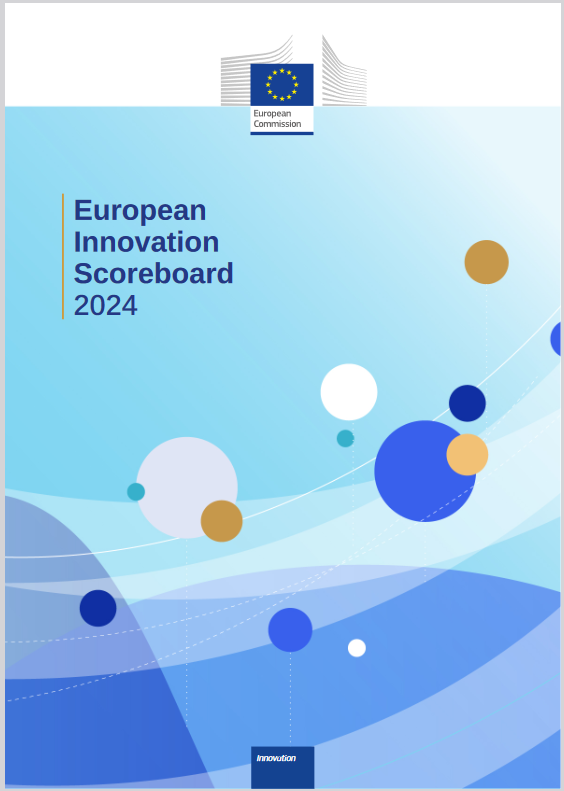The European Innovation Scoreboard (EIS) is an annual publication by the European Commission that provides a comparative assessment of the innovation performance of EU Member States, neighbouring European countries and selected global competitors. The EIS is based on 32 indicators covering the economy, business and entrepreneurship, innovation profiles, governance and policy framework, climate change and demography. The EIS 2024 covers all EU Member States, 12 neighbouring European countries including the Western Balkans and, for the first time, Moldova. Furthermore, with a smaller set of indicators, 11 global competitors are assessed. However, data availability varies and in particular the Western Balkans are still in the process of aligning their statistical methodologies with those of the EU.
Based on their scores, countries are categorised in four innovation groups:
- Innovation Leaders (performance is above 125% of the EU average),
- Strong Innovators (between 100% and 125% of the EU average),
- Moderate Innovators (between 70% and 100% of the EU average) and
- Emerging Innovators (below 70% of the EU average).
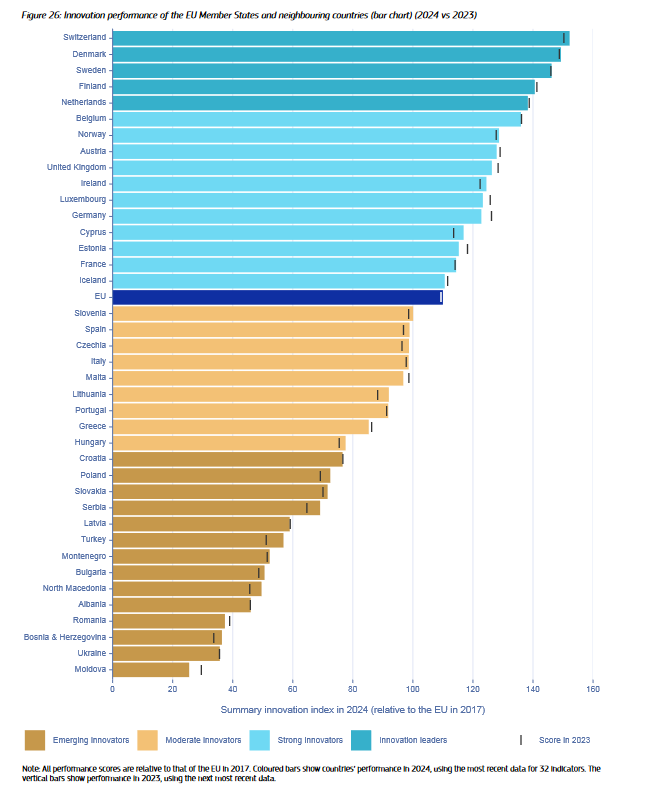
The European Innovation Scoreboard interactive tool allows for customised comparisons of performance scores. It allows to visualize country profiles, compare relative strengths, weaknesses and trends, and test correlations between indicators – however, data of Western Balkans is not included. https://ec.europa.eu/research-and-innovation/en/statistics/performance-indicators/european-innovation-scoreboard/eis. However, raw data is available at EIS 2024 – EU countries and neighbouring countries database.
For more information, please visit the source page of this document and the respective annexes: https://research-and-innovation.ec.europa.eu/statistics/performance-indicators/european-innovation-scoreboard_en and https://ec.europa.eu/commission/presscorner/detail/en/ip_24_3666
- Main report
- Executive summary
- Annex B (performance per indicator)
- Methodology report
- Press release
- Questions and answers on the European Innovation Scoreboard 2024
- EU countries and neighbouring countries database
- EU and global competitors database
The innovation performance of the European Union continues to improve at a steady pace, reaching a 10% increase since 2017 and a growth of 0.5% between 2023 and 2024. According to the 2024 edition of the European Innovation Scoreboard (EIS) published on 7 July 2024, most EU Member States have boosted their innovation performance, but the increase varies strongly from one to another.
As mentioned above, the innovation performance is also assessed of 12 neighbouring (non-EU) countries (Albania, Bosnia and Herzegovina, Iceland, Moldova, Montenegro, North Macedonia, Norway, Serbia, Switzerland, Türkiye, Ukraine and the United Kingdom) as far as data is available for the respective indicators (i.e. not necessarily the full 32 EIS indicators).
Key results from the WB perspective are:
- Serbia outperformed Latvia to rank as the 4th Emerging Innovator
- North Macedonia showed the fastest growth among the Emerging Innovators (+11.7%-points)
- WB are catching up in the group of Emerging Innovators: they demonstrate faster growth on average that the EU peers in the group
- Albania, Bosnia and Herzegovina and North Macedonia join with Denmark on socring 125% and above EU average in the development of environment-related technologies as a perscentage of all technologies
- Bosnia and Herzegovina, Montenegro, Serbia score highly on “SMEs introducing product innovations” (125% above EU average)
The Western Balkans are in the group of Emerging Innovators. The report outlines some figures:
“Serbia outperformed Latvia to rank as the 4th Emerging Innovator and 29th in the extended EIS. Montenegro, Albania and Ukraine had moderate improvements in performance, while North Macedonia and Bosnia and Herzegovina have improved their position by 3.9% and 2.7%-points. Moldova entered the EIS for the first time in 2024 and is ranked 40th (with a ‘technical’ decline of 4.2%-points compared to 2023). Moldova has demonstrated substantial commitment in collecting data for enough indicators to take part in the EIS.” and furthermore that “Among Emerging Innovators, North Macedonia (+11.7%-points) showed the fastest growth as a non-EU country over 2017-2024, but it is Croatia (+14.5%-points) that leads the group followed by Poland (+13%-points). Overall, the neighbouring countries in the group demonstrated faster growth on average than their EU peers, pointing to a catching-up effect. For example, Montenegro (+5.6%-points), Albania (9.9%-points), Bosnia and Herzegovina (+6.3%-points), Serbia (+7.4%-points), Ukraine (+3.7%-points), Türkiye (+6.1%-points) grew faster than Slovakia (+2.7%-points), Latvia (+2.8%-points), Bulgaria (+2.8%-points) and Romania (+1.5%-points). The only exception is Moldova that recorded a modest increase of 0.2%-points since 2017.
The report also describes some of the strengths and weaknesses compared to the EU Member States.
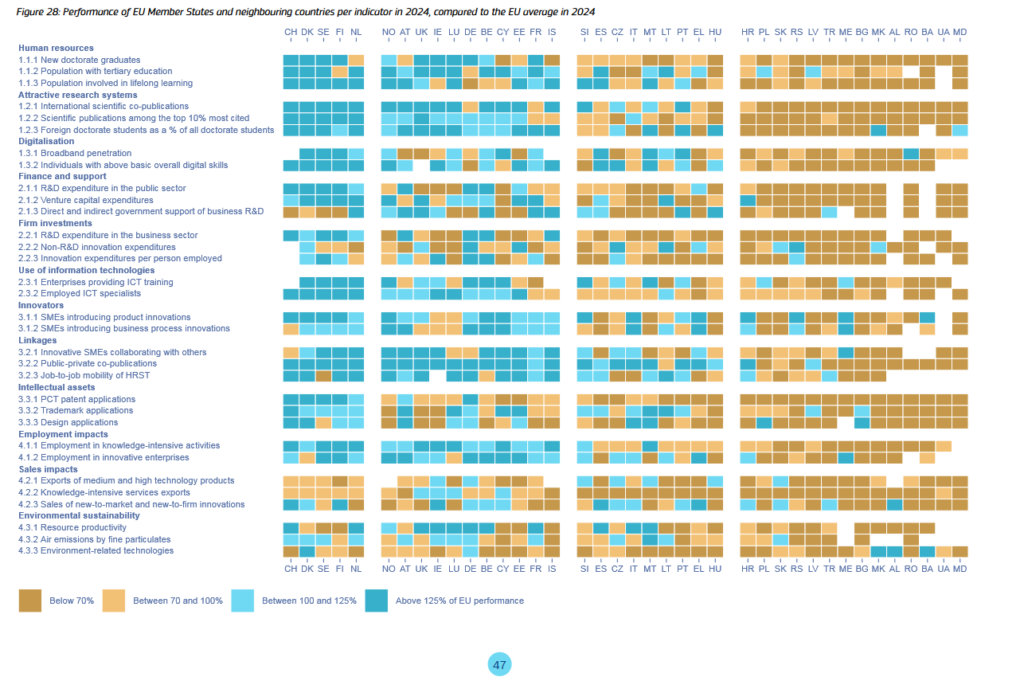
As indicated above, there are quite a few “blue spots” where the WB economies are above the EU average (sometimes even above 125% of EU performance):
- Environment related technologies (Albania, Bosnia and Herzegovina, North Macedonia)
- SMEs introducing product innovations (Bosnia and Herzegovina, Montenegro, Serbia)
- Non-R&D innovation expenditures (North Macedonia, Serbia)
- SMEs introducing business process innovations (Montenegro, Serbia)
- Sales of new-to-market and new-to-firm innovations (Albania)
- Employment in innovative enterprises (Montenegro)
- Innovative SMEs collaborating with others (Montenegro)
- Enterprises providing ICT training (Montenegro)
- Foreign doctorate students as a % of all doctorate students (North Macedonia)
- Innovation expenditures per person employed (Serbia)
Please find here also screenshots of the dedicated pages for the Western Balkans:
